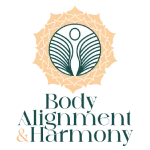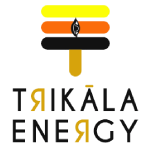
The objective of “Body Alignment and Harmony” is to reduce physical discomfort, enhancing energy flows for achieving body-mind association.
Integrating techniques from modalities that focus on alignment can contribute to a more harmonious well-being

Balanced Musculoskeletal Coordination
Proper alignment encourages the balanced engagement of muscles, preventing overuse or underuse of specific muscle groups. This balanced muscle activity contributes to overall body harmony and coordination
Fluidity of movement
Body alignment supports efficient and coordinated movement patterns. While engaging in various physical activities, proper alignment contributes to fluid and harmonious movements
Reduced physical and mental strain
Proper body alignment and distribution of weight evenly across joints and muscles, reduce the strain on specific areas. This can lead to decreased discomfort, muscle tension, and fatigue, fostering a sense of harmony within the body
Body-mind association
Achieving body alignment often involves awareness of how the body moves and feels. This increased awareness enhances a stronger mind-body connection, promoting harmony between physical sensations and mental well-being
Emotional harmony
Maintaining an upright and aligned posture can positively influence mood and confidence, contributing to emotional harmony
Improved Breathing
Body alignment plays a pivotal role in respiratory function. The chest expands more freely as the spine is aligned, allowing deeper and efficient breathing.
Somatic function of the joints
Aligned body prevents excessive wear and tear of joints, contributes to long-term joint health, and reduces the risk of degenerative conditions
Holistic wellness
Addressing physical alignment, emotional well-being, and mental health collectively contributes to an overall sense of harmony and balance.
Workshops
Somatic Dysfunction of Joints
Somatic dysfunction is an impaired function of the structural framework of the body. This includes predominantly musculoskeletal and myofascial systems, nervous system, and to a lesser extent, lymphatic and vascular systems. The majority of the time, a somatic dysfunction shows neighboring joint (s) involvement as well.
Somatic dysfunction can be triggered by an injury to the physical body or chronic postural habits/deviations/abnormalities or emotional disturbances, followed by mechanical restrictions due to hypertonic/hypotonic muscles and other soft tissue changes in the affected area.
They may also arise in response to damage or irritation to distal tissues through viscero-somatic reflexes.
Somatic Dysfunction of Joints is a series of workshops that address individual joint dysfunction and correction with musculoskeletal and myofascial reflex corrections.

